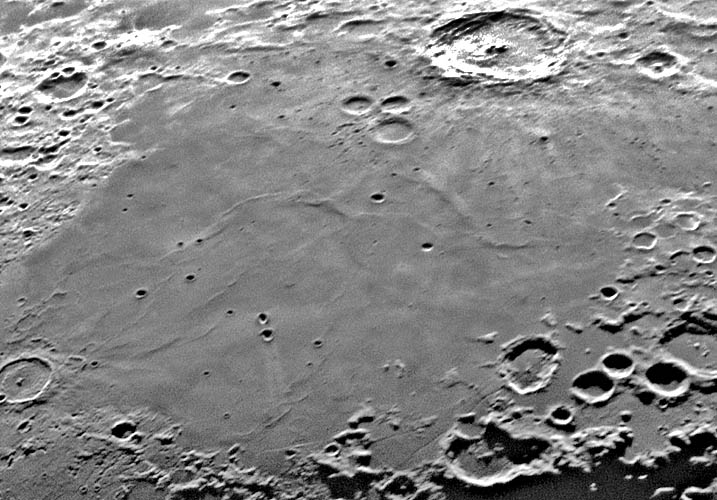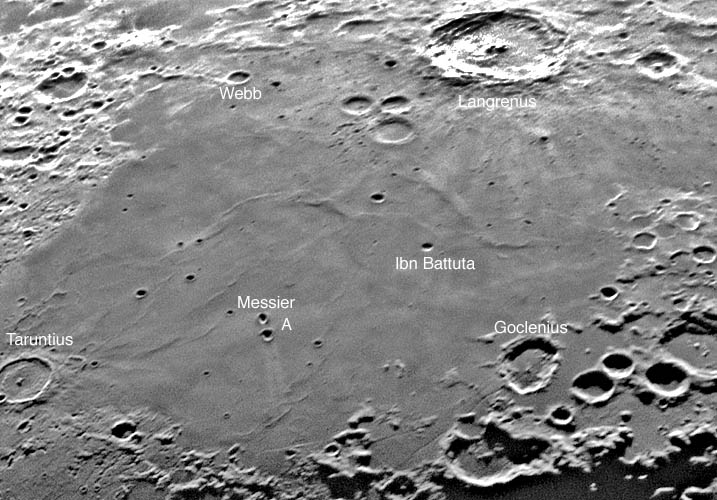Difference between revisions of "May 29, 2005"
| (12 intermediate revisions by 2 users not shown) | |||
| Line 1: | Line 1: | ||
__NOTOC__ | __NOTOC__ | ||
=A Shallow Sea of Lava= | =A Shallow Sea of Lava= | ||
| + | <!-- Start of content --> | ||
<table width="85%" border="0" align="center" cellpadding="6" cellspacing="2"> | <table width="85%" border="0" align="center" cellpadding="6" cellspacing="2"> | ||
<tr> | <tr> | ||
| − | |||
</tr> | </tr> | ||
</table> | </table> | ||
<table width="85%" border="0" align="center" cellpadding="6" cellspacing="2"> | <table width="85%" border="0" align="center" cellpadding="6" cellspacing="2"> | ||
<tr><td colspan="2" valign="top"><div align="center"> | <tr><td colspan="2" valign="top"><div align="center"> | ||
| − | + | <!-- Mouse style 1 --> | |
| − | + | {{HoverImage|LPOD-2005-05-29.jpeg|LPOD-2005-05-29b.jpeg}} | |
| − | |||
| − | |||
</div></td> | </div></td> | ||
</tr> | </tr> | ||
</table> | </table> | ||
<table width="80%" border="0" align="center" cellpadding="8"> | <table width="80%" border="0" align="center" cellpadding="8"> | ||
| − | <tr><td><div align="center" class="main_sm">Image Credit: [mailto:HowardEskildsen@msn.com Howard Eskildsen]</p> | + | <tr><td><div align="center" class="main_sm"><p>Image Credit: [mailto:HowardEskildsen@msn.com Howard Eskildsen]</p> |
</div></td> | </div></td> | ||
</tr> | </tr> | ||
| Line 24: | Line 22: | ||
<p align="center"><b>A Shallow Sea of Lava</b></p> | <p align="center"><b>A Shallow Sea of Lava</b></p> | ||
<p align="left">Mare Fecunditatis lavas are assumed to fill an impact basin because that is the case for nearly every other roughly circular pile of lava on the Moon. But there is little evidence for the basin, except some curved ridges that might represent an inner ring. Based on the extent of the mare, the Fecunditatis Basin is about 690 km wide. Probably most of the time Fecunditatis is observed the target is the bizarre ricochet craters Messier and Messier A. And often observers are attracted to Langrenus at the top right, and less frequently to Taruntius (bottom left) or the Goclenius rilles (bottom right). Clementine images in various wavelengths have allowed researchers to assemble mosaics whose colors represent chemical compositions of the soils of Fecunditatis. The majority of the Mare is low-Titanium basalts, but there are smaller amounts of higher Titanium basalts that are the youngest flows. Luna 16 landed west of Webb and the returned samples have ages of about 3.3 b.y. The thickness of the Fecunditatis lavas was estimated from the spectral colors of impact crater ejecta. Craters that excavated into the underlying highlands have a distinctive color. And because the depths of craters can be estimated from their diameters, it is easy to estimate how deep the lavas are. In general, Mare Fecunditatis lavas are thin, about 200 m thick, with the greatest depths being 400-500 m. </p> | <p align="left">Mare Fecunditatis lavas are assumed to fill an impact basin because that is the case for nearly every other roughly circular pile of lava on the Moon. But there is little evidence for the basin, except some curved ridges that might represent an inner ring. Based on the extent of the mare, the Fecunditatis Basin is about 690 km wide. Probably most of the time Fecunditatis is observed the target is the bizarre ricochet craters Messier and Messier A. And often observers are attracted to Langrenus at the top right, and less frequently to Taruntius (bottom left) or the Goclenius rilles (bottom right). Clementine images in various wavelengths have allowed researchers to assemble mosaics whose colors represent chemical compositions of the soils of Fecunditatis. The majority of the Mare is low-Titanium basalts, but there are smaller amounts of higher Titanium basalts that are the youngest flows. Luna 16 landed west of Webb and the returned samples have ages of about 3.3 b.y. The thickness of the Fecunditatis lavas was estimated from the spectral colors of impact crater ejecta. Craters that excavated into the underlying highlands have a distinctive color. And because the depths of craters can be estimated from their diameters, it is easy to estimate how deep the lavas are. In general, Mare Fecunditatis lavas are thin, about 200 m thick, with the greatest depths being 400-500 m. </p> | ||
| − | <blockquote><p align="right">— [mailto:tychocrater@yahoo.com Chuck Wood]</blockquote> | + | <blockquote> |
| − | <p align="left" | + | <p align="right">— [mailto:tychocrater@yahoo.com Chuck Wood]</p></blockquote> |
| + | <p align="left"><b>Technical Details:</b><br> | ||
May 13, 2005. Jose Olivarez's 10" f/16 refractor + Nikon Coolpix 4300 + Maxview 40 eyepiece + 2X Barlow.</p> | May 13, 2005. Jose Olivarez's 10" f/16 refractor + Nikon Coolpix 4300 + Maxview 40 eyepiece + 2X Barlow.</p> | ||
<p><b>Related Links:</b><br> | <p><b>Related Links:</b><br> | ||
Rukl Plates 37, 48 and 59 | Rukl Plates 37, 48 and 59 | ||
<br>D. Rajmon & P.Spudis (2004) Distribution and stratigraphy of basaltic units in Maria Tranquillitatis and Fecunditatis: A Clementine perspecttive. Meteoritics & Planetary Science 39, 1699-1720. | <br>D. Rajmon & P.Spudis (2004) Distribution and stratigraphy of basaltic units in Maria Tranquillitatis and Fecunditatis: A Clementine perspecttive. Meteoritics & Planetary Science 39, 1699-1720. | ||
| − | <p | + | </p> |
| + | <p><b>Yesterday's LPOD:</b> [[May 28, 2005|Down the Rille]] </p> | ||
| + | <p><b>Tomorrow's LPOD:</b> [[May 30, 2005|Hundreds of Domes]] </p> | ||
</tr> | </tr> | ||
</table> | </table> | ||
| Line 41: | Line 42: | ||
<p align="center" class="main_titles"><b>Author & Editor:</b><br> | <p align="center" class="main_titles"><b>Author & Editor:</b><br> | ||
[mailto:tychocrater@yahoo.com Charles A. Wood]</p> | [mailto:tychocrater@yahoo.com Charles A. Wood]</p> | ||
| − | < | + | <!-- Cleanup of credits --> |
| − | + | <!-- Cleanup of credits --> | |
| − | < | + | <!-- Cleanup of credits --> |
| − | + | <!-- Cleanup of credits --> | |
| − | + | <!-- Cleanup of credits --> | |
| − | < | + | <!-- Cleanup of credits --> |
| − | < | + | <!-- Cleanup of credits --> |
| − | + | <!-- Cleanup of credits --> | |
| − | < | + | <!-- Cleanup of credits --> |
| − | + | <!-- Cleanup of credits --> | |
</td></tr> | </td></tr> | ||
</table> | </table> | ||
<p> </p> | <p> </p> | ||
| − | ---- | + | <!-- End of content --> |
| − | + | {{wiki/ArticleFooter}} | |
| − | |||
Latest revision as of 14:16, 15 March 2015
A Shallow Sea of Lava
Image Credit: Howard Eskildsen |
|
A Shallow Sea of Lava Mare Fecunditatis lavas are assumed to fill an impact basin because that is the case for nearly every other roughly circular pile of lava on the Moon. But there is little evidence for the basin, except some curved ridges that might represent an inner ring. Based on the extent of the mare, the Fecunditatis Basin is about 690 km wide. Probably most of the time Fecunditatis is observed the target is the bizarre ricochet craters Messier and Messier A. And often observers are attracted to Langrenus at the top right, and less frequently to Taruntius (bottom left) or the Goclenius rilles (bottom right). Clementine images in various wavelengths have allowed researchers to assemble mosaics whose colors represent chemical compositions of the soils of Fecunditatis. The majority of the Mare is low-Titanium basalts, but there are smaller amounts of higher Titanium basalts that are the youngest flows. Luna 16 landed west of Webb and the returned samples have ages of about 3.3 b.y. The thickness of the Fecunditatis lavas was estimated from the spectral colors of impact crater ejecta. Craters that excavated into the underlying highlands have a distinctive color. And because the depths of craters can be estimated from their diameters, it is easy to estimate how deep the lavas are. In general, Mare Fecunditatis lavas are thin, about 200 m thick, with the greatest depths being 400-500 m. Technical Details: Related Links: Yesterday's LPOD: Down the Rille Tomorrow's LPOD: Hundreds of Domes |
|
Author & Editor: |
COMMENTS?
Register, Log in, and join in the comments.





